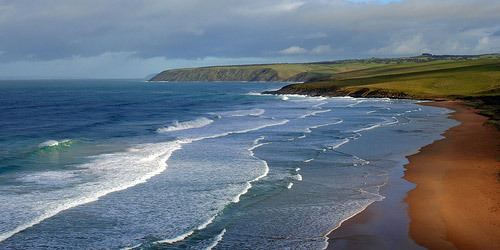Basin countries Australia Islands West Island | Primary inflows | |
 | ||
Location | ||
Encounter Bay is a bay on the south central coast of South Australia about 100 kilometres (62 mi) south of the Adelaide city centre. It was named by Matthew Flinders after his encounter on 8 April 1802 with Nicolas Baudin, the commander of the Baudin expedition of 1800-03. It is the site of both the mouth of the River Murray and the regional city of Victor Harbor. It is one of four ‘historic bays’ located on the South Australian coast.
Contents
- Map of Encounter Bay South Australia Australia
- Whale watching encounter bay southern right whales east of the bluff
- ExtentEdit
- DescriptionEdit
- European arrivalEdit
- Protected areasEdit
- References
Map of Encounter Bay, South Australia, Australia
Whale watching encounter bay southern right whales east of the bluff
ExtentEdit
There are at least two definitions of the bay’s extent. Firstly, an American source states that Newland Head is its westerly extremity while the mouth of the River Murray is the easterly extremity. Secondly, Australian authorities consider the bay’s extent consists of all of the sea north of a line running east from the southern tip of Rosetta Head to the Younghusband Peninsula. Encounter Bay is one of four bays on the South Australian coast considered by the Australian government to be a ‘historic bay’ under the Seas and Submerged Lands Act 1973 and was proclaimed as such in 1987 and again in 2006 and 2016 with the result that the mouth of the bay is on the territorial seas baseline and the waters within the bay are internal waters as per the definition used in United Nations Convention on the Law of the Sea.
DescriptionEdit
Traditionally the land of the Ramindjeri clan of the Ngarrindjeri people, the bay's coastline is the site for the following settlements: Victor Harbor, Port Elliot, Middleton and Goolwa. The Murray, Inman and Hindmarsh Rivers drain into the bay.
Islands located within Encounter Bay include (from west to east): Wright Island, Granite Island, Seal Island (also known as Seal Rock) and Pullen Island.
European arrivalEdit
Encounter Bay was named by Matthew Flinders on 8 April 1802 after his encounter with Nicolas Baudin, both of whom were charting the Australian coastline for their respective countries (Britain and France). The encounter between the scientists was peaceful, even though their countries were at war at the time.
Protected areasEdit
The following protected areas exist within the bay’s waters: the Granite Island Recreation Park, the Pullen Island Conservation Park and the West Island Conservation Park while the bay’s waters are within the boundaries of the Encounter Marine Park. The following protected areas adjoin the shores of the bay: the Coorong National Park.
